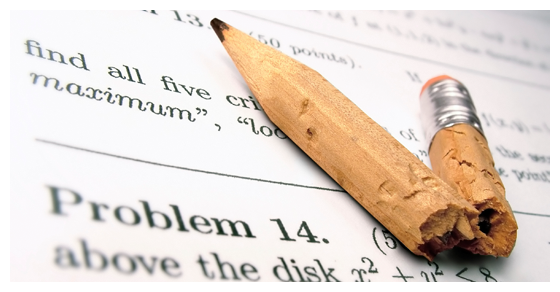
Instructor's Corner #3: For Math Anxiety, Actions (And Reactions) Speak Louder Than Words
There is a growing global concern over the pandemic of math anxiety among students. According to the Department of Education, only 16 percent of high school seniors in the United States are proficient in mathematics and interested in a STEM (science, technology, engineering, and mathematics) career. Our study identified how teachers’ communication can help students overcome math anxiety and become more motivated in number-intensive classrooms.
When a student has math anxiety, this means they experience physical and/or psychological symptoms when dealing with numbers. These symptoms may include sweaty palms, a racing heart, nausea, light-headedness, low motivation, worry, and inability to concentrate. For students who have a high level of math anxiety, the symptoms are so debilitating they cause a complete mental block. Because of these unpleasant symptoms, many students across the country are choosing to avoid courses and learning when they anticipate that the subject will involve working with a lot of numbers.
Scholars have long believed that students’ classroom experiences are typically improved when teachers:
- Smile
- Make eye contact with students
- Use vocal inflection rather than being monotone
- Look relaxed rather than nervous
- Use hand gestures while talking
This set of nonverbal communicative behaviors is known as immediate behaviors. The use of immediate behaviors typicallyimproves students’ classroom experiences, but does not always improve communication. Whether these communicative tools are effective relies upon how students perceive the teacher meant the behavior to be understood. For example, if a teacher is making eye contact with a student, but a student perceives that he or she is being stared down, this is ineffective communication that will result in discomfort for the student.
Our study of math anxiety and teacher communication started with this knowledge of teachers’ immediate behaviors and students’ perceptions. Previous research has identified that students who perceive their teachers to be immediate have a better learning experience. Thus, we predicted that effective immediate behaviors those students perceive positively would improve their motivation and decrease their math anxiety in classes where they must work with a lot of numbers.
To test our prediction, 341 students were surveyed to assess their math anxiety, intrinsic motivation, their teachers’ use of immediate behaviors, and students’ psychological responses to those immediate behaviors. Researchers visited the students during their general studies courses and asked them to think about one of the math-based courses in which they were enrolled for the semester and the teacher of that course. The students who participated in the survey were enrolled in a variety of math, science, and business courses, which means the data covered multiple course topics and teachers.
The results were consistent with our prediction. In classrooms where teachers’ immediate behaviors were perceived positively by students, math anxiety decreased and intrinsic motivation increased. There were two important takeaways from this new classroom communication model.
Teacher communication can indeed help students overcome their math anxiety. Teachers of number-based courses who are aware of their nonverbal communication and work to improve it can help students succeed by decreasing math anxiety and increasing intrinsic motivation. Nonverbal awareness is not natural for many people, so teachers who wish to improve may need to videotape themselves teaching to have an idea of how they normally communicate with their students. Teachers should identify how frequently they smile, give students eye contact, use vocal inflection, have a relaxed posture, and use hand gestures. Increasing these behaviors is likely to result in positive classroom results.
However, this study also indicated the act of simply displaying that checklist of immediate behaviors is not enough to guarantee that teachers are improving students’ math anxiety and motivation. Teachers must do perception checks to identify how students are interpreting their behaviors. This requires having students assess the effectiveness of their communication. Teachers must know whether students think, for example, they are making eye contact or staring, smiling, or smirking, and so on. These distinctions are key to helping students succeed.
In the last international ranking of math and science, the United States had fallen to 25th in mathematics and 17th in science. Some projections suggest that the United States will still place low in the 2015 rankings. Improving students’ performance in math and science is imperative. This study presents teacher immediacy communication as a critical tool for improving STEM aptitude for our future learners.

